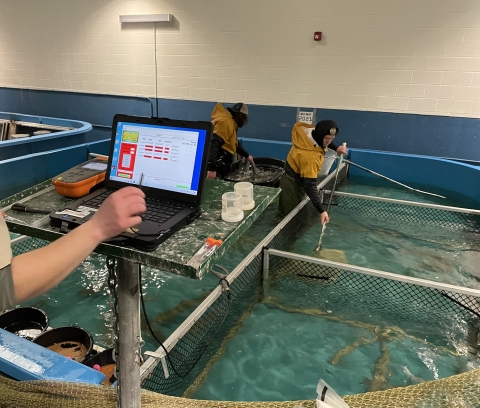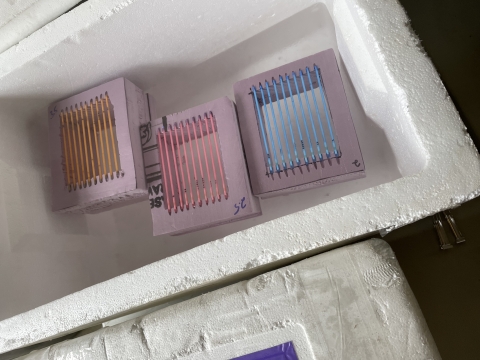What do you do if you need to hold fewer fish, but still maintain your production levels? Well, Craig Brook National Fish Hatchery found itself facing this dilemma after scrutiny by the Maine Department of Environmental Protection due to high phosphorus effluent. The Craig Brook National Fish Hatchery is dedicated to maintaining the last remaining natural populations of Atlantic Salmon in the US. However, the strict discharge limitations for Alamoosook Lake have forced the hatchery to reduce the number of fish they hold for spawning. To maintain production numbers while reducing captive fish, Craig Brook called upon the Warm Springs Fish Technology Center to enquire if cryopreservation could be the answer.
Cryopreservation is the process of preserving living material with subfreezing temperatures for an extended period, while maintaining life post-thaw. Gamete cryopreservation allows for storage of genetic material and the ability to mitigate production issues. The Warm Springs Fish Technology Center specializes in aquatic species cryopreservation research and application across the nation. Cellular variation from species to species requires development of unique freezing protocols. The Cryopreservation team, consisting of Bill Wayman and Valerie Kearny, develops these techniques and maintains a fish sperm bank to assist partners in maintaining their genetic management programs often associated with breeding endangered species.
Last year, Craig Brook National Fish Hatchery shipped milt to Warm Springs so Bill and Valerie could begin their research, adjusting numerous variables across freezing trials to identify the method resulting in the highest sperm motility post-thaw. In early December 2024, Bill and Valerie traveled to Maine to further refine freezing procedures and conduct fertilization trials. Fertilizing small batches of eggs with sperm frozen in different ways reveals the best cryopreservation method more reliably than motility estimates alone. The Craig Brook team seamlessly integrated Bill's and Valerie’s gamete needs during their regular spawning procedures and showed the Southerners just how cold coldwater fish production can be.
During their trip to Maine, Bill and Valerie were able to conduct several studies examining differences among cryoprotectant chemical solutions, dilution ratios, and freezing rates. Both the Craig Brook and Warm Springs teams are awaiting egg development so the best freezing method can be identified, and an Atlantic Salmon cryopreservation protocol can be established. This interregional collaboration exemplifies the Fish and Wildlife Services’ ability to work together in developing innovative strategies aimed at solving complex conservation issues.








